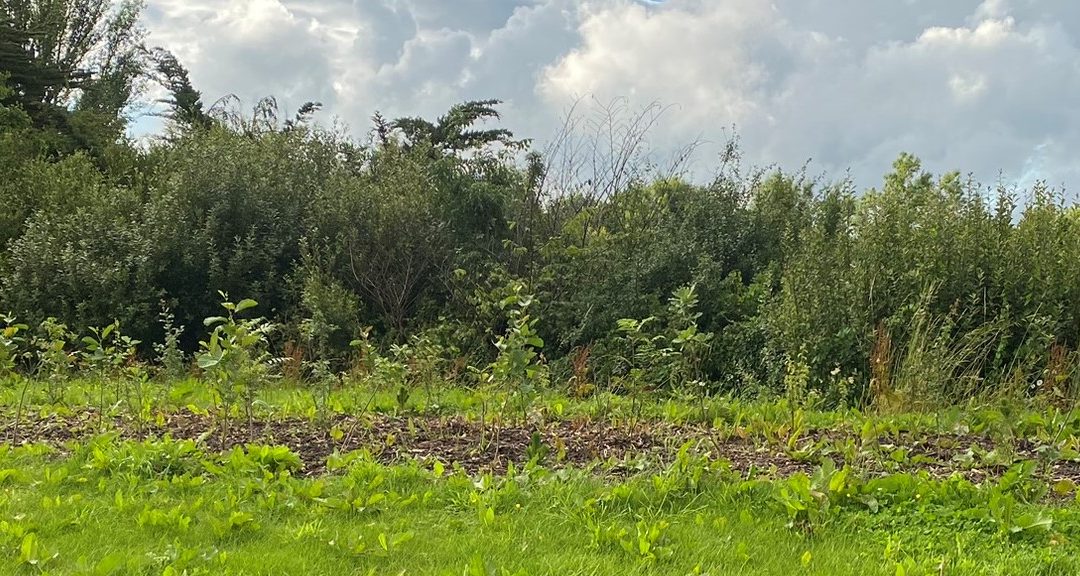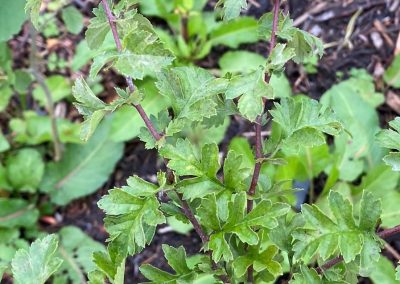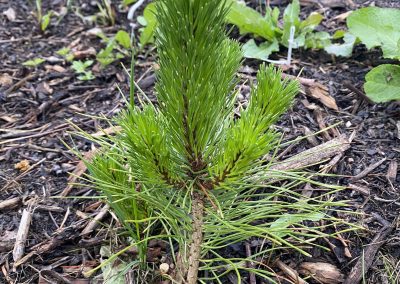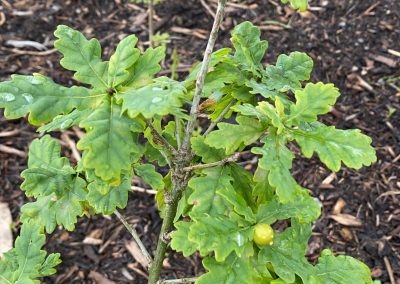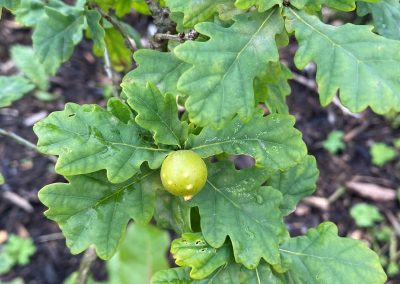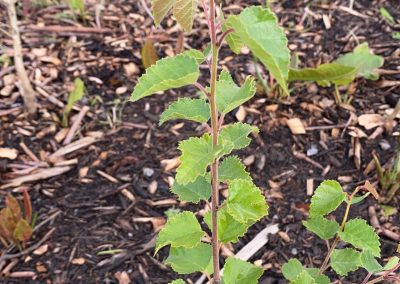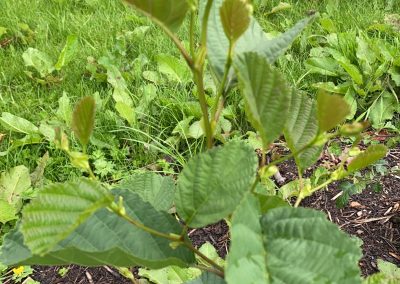Pocket Forest?! What?! Why?!
Back at the start of 2023, Ardclough Biodiversity Group applied to the Native Woodland Trust’s ‘Trees for Communities’ scheme. To help the Native Woodland Trust in their goal of preserving ancient Irish woodlands and promoting the development of new woodlands from native seed, the scheme would supply bundles of 50 native tree saplings to suitable community groups around the country.
In late March, it should have been no surprise when a bundle of 50 to 60 bare-root whips turned up and needed to be planted.
We opted for a “pocket forest” style planting on the wide verge opposite the William’s Grove development. This would be more easily completed than finding homes for 50 separate trees around the community – the planting season was nearing its end. It would also give us a visible presence in the community (perhaps once the trees get a little taller), a project that we can reference with pride and by way of introducing ourselves. Also, though “pocket-sized”, it will genuinely be a resource for our local wildlife and biodiversity – which is what we’re really all about.
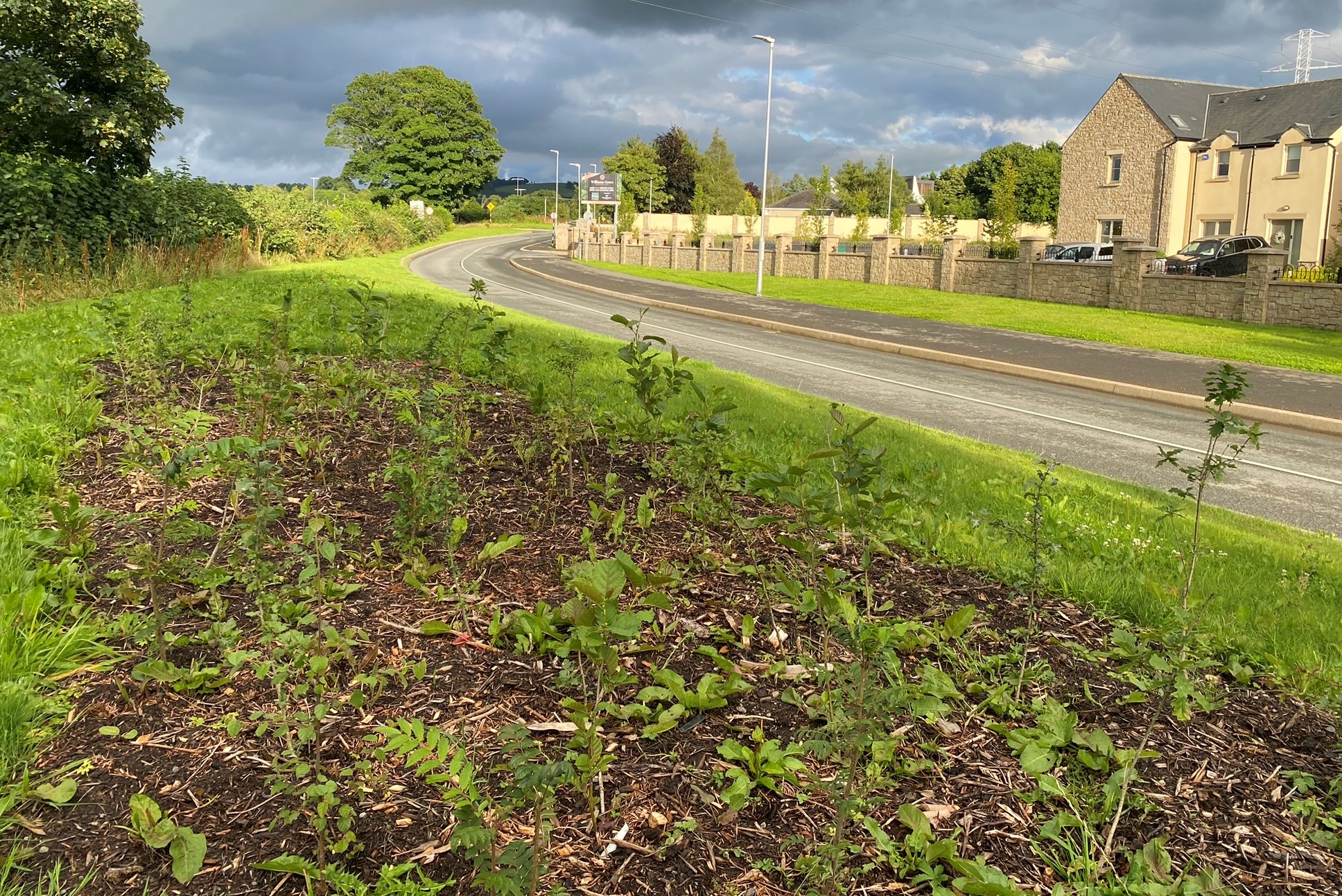
What’s a pocket forest?
A forest – as a natural ecosystem – is much more than just land with trees on it. A natural forest is a community of thousands of interdependent species competing with each other and co-dependent on each other at the same time. From bacteria and fungi, through insects and other invertebrates, mosses, lichens, ground level plants, understory, the trees of course, birds, mammals, amphibians, reptiles; there is life at every level, from under the ground, to the tops of the trees and above. They’re places of dense, chaotic growth with rarely a straight line to be found.
A pocket forest is intended to recreate the nature-rich environment of a natural forest, in a small space. Our project is probably best described as a “pocket forest style” planting. There are techniques and practices developed to optimise the rapid development of the soil biodiversity and so on. In our case, the main principles we have borrowed are using trees native to the location, that will grow to different heights and a dense planting scheme.
Planting the trees so close together is going to limit how much they grow and they won’t grow so tall and straight as we’ve conditioned ourselves to like, but the aim here is not to grow a few specimen trees, but to provide a dense pocket of cover for all kinds of wildlife to flourish.
What have we got?
From the Native Woodland Trust, we received a mix of Oak, Birch, Rowan, Alder and Hawthorn. Seamus, one of our local horticulturalists, brought down some Scots Pine saplings. The flowers and berries from the Rowan and Hawthorn will add colour in Spring and Autumn along with providing food to our pollinators and birds, in particular. The Oak, Birch and Alder will be a little less showy, but their more discrete flowers will be welcomed by as many species along with the cones of the Birch, Alder and Scots Pine. You can be sure that it will only take a few years before there are birds nesting in there and in fact, as if to illustrate the importance of native species, one of our Oaks already has an Oak Marble Gall in which the larva of an Oak Marble Gall Wasp will be growing, You can’t have Oak Marble Gall Wasps, without Oak trees! (I don’t know what an Oak Marble Gall Wasp looks like either, but I’ve included a photo of the gall.)
Hawthorn
A young Hawthorn sapling in the pocket forest. Hawthorn is common in our hedgerows but it is a valuable food plant for pollinators, birds and even small mammals. It will fill the understory of the pocket forest and its dense thorny branches will provide safe nesting sites for birds.
Scots Pine
A young Scots Pine sapling in the pocket forest. Scots Pine is one of Ireland’s very few native evergreen species. Maybe some day we’ll even see red squirrels here.
Oak
A young Oak sapling in the pocket forest. Surely there’s a law that says you can’t plant a forest, even a pocket one, in Kildare without Oak? Oak is possibly the tree that supports the highest number of other species in our natural ecosystems.
Oak Marble Gall
An Oak Marble Gall on one of the Oak saplings in the pocket forest. The larva of an Oak Marble Gall Wasp will be growing inside. The chemicals produced by the larva cause the tree to grow the gall, from which the larva can feed on.
Rowan
A young Rowan sapling in the pocket forest. Rowan is also known as Mountain Ash and is a relation of our well-known Ash trees. Unfortunately a lot of our local trees are Ash and most are dying from Ash die-back disease. Rowan isn’t affected.
Birch
A young Birch sapling in the pocket forest. Along with being a god-looking tree, best known for it’s white papery bark, Birch will also produce pollen and cones that will feed our wildlife.
Give it time
The trees are small right now and may not look like much. We’ll need to keep the weeds down to let the trees grow, but give it a few years and it should develop into a wonderful jumble of life!
Thank you to the Native Woodland Trust and thank you to everybody who helped along the way, advising, providing mulch, planting and weeding.
Ardclough Biodiversity Group
Who wants trees?
The Native Woodland Trust may well run the scheme again this Winter and we will certainly apply. We could use the trees to expand the current planting, but if anybody has any ideas or requests for trees for their area, let us know. Also, the Native Woodland Trust isn’t the only organisation offering native trees. Another group called Trees on the Land have provided many hundreds of native trees that are planted on farms and land around Ardclough. If anybody in the area is considering anything from a handful of trees to planting acres of land or creating hedges – get in touch. These organisations and we, will help any way we can to increase our native tree cover around Ardclough.
